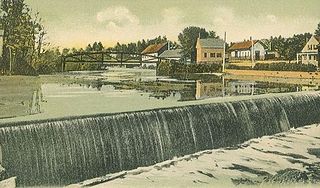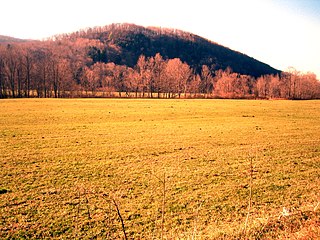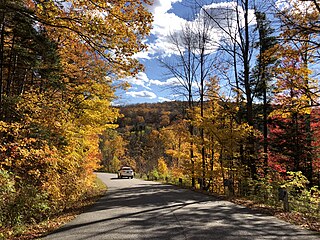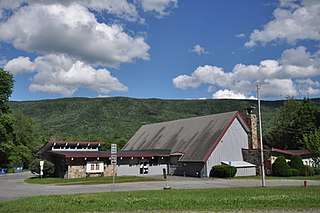
Bennington County is a county in the U.S. state of Vermont. As of the 2020 census, the population was 37,347. The shire towns are jointly Bennington and Manchester, and the largest municipality is Bennington. The county was created in 1778.

Bennington Township is a civil township of Shiawassee County in the U.S. state of Michigan. As of the 2020 census, the township population was 3,119. Bennington Township is the center of population of the state of Michigan.

Bennington is a town in Hillsborough County, New Hampshire, United States. The population was 1,501 at the 2020 census.

North Bennington is an incorporated village in the town of Bennington in Bennington County, Vermont, United States. The population was 1,716 at the 2020 census.

Old Bennington is a village in Bennington County, Vermont, United States. It is located entirely within the town of Bennington. As of the 2020 census, the village had a population of 156.

Pownal is a town in Bennington County, Vermont, United States. As of the 2020 census, the town population was 3,258. The town of Pownal includes the villages of Pownal, North Pownal, and Pownal Center.

Readsboro is a town in Bennington County, Vermont, United States. The town was named after John Reade, a landholder. The population was 702 at the 2020 census. The hamlet of Heartwellville is in the northern part of Readsboro, approximately 5 miles (8 km) north on Route 100 from the hamlet of Readsboro.

Rupert is a town in Bennington County, Vermont, United States. The population was 698 at the 2020 census.

Sandgate is a town in Bennington County, Vermont, United States. The population was 387 at the 2020 census.

Shaftsbury is a town in Bennington County, Vermont, United States. The population was 3,598 at the 2020 census.
South Shaftsbury is a census-designated place (CDP) in the town of Shaftsbury in Bennington County, Vermont, United States. The population was 681 at the 2020 census.

Stamford is a town in Bennington County, Vermont, United States. The population was 861 at the 2020 census.

Sunderland is a town in Bennington County, Vermont, United States. The population was 1,056 at the 2020 census. It is home to the mail-order company Orvis.

Winhall is a town in Bennington County, Vermont, United States. The population was 1,182 at the 2020 census. In the southeastern corner of the town is the unincorporated village of Bondville. Half of the community of Stratton Mountain, part of Stratton Mountain Resort, is in the southern part of the town.

Woodford is a town in Bennington County, Vermont, United States. As of the 2020 census, the population was 355.

Pittsford is a town in Rutland County, Vermont, United States. As of the 2020 census, the town population was 2,862. Named for William Pitt, it has two picket forts used in the American Revolutionary War.

Arlington is a town in Bennington County, Vermont, United States. The population was 2,457 at the 2020 census.
Bennington is a census-designated place (CDP) in Bennington County, Vermont, United States. It is located entirely within the town of Bennington. The population of the CDP was 9,074 at the 2010 census, or 57.6% of the population of the entire town.

Bennington is a town in Bennington County, Vermont, United States. It is one of two shire towns of the county, the other being Manchester. As of the 2020 US Census, the population was 15,333. Bennington is the most populous town in southern Vermont, the second-largest town in Vermont and the sixth-largest municipality in the state.

Wilmington is a town in Windham County, Vermont, United States. The population was 2,255 at the 2020 census.



















